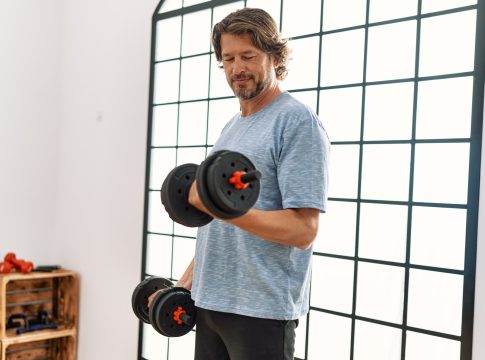Don’t Let Age Slow You Down: The Importance of Strength Training
As we age, our bodies undergo a plethora of changes, and one of the less welcome shifts is the onset of muscle loss. Research published in the Journal of Cachexia, Sarcopenia and Muscle reveals that adults can begin to lose muscle mass as early as their 30s. However, there’s a silver lining: incorporating regular strength training can effectively combat this decline, enabling you to maintain muscle strength long into your later years.
Why Strength Training Matters
Beyond sheer muscle preservation, strength training plays a critical role in promoting balance, coordination, and overall long-term health. Kirra Mitlo, a certified personal trainer with a background in Exercise Science, emphasizes the importance of a thoughtful and systematic approach to fitness. She advocates for an accessible, seven-move dumbbell routine that can easily be adapted to fit into any busy lifestyle.
The Ultimate Dumbbell Workout
Mitlo’s workout features seven intentional exercises aimed at enhancing strength and functionality. Here’s a breakdown of the routine:
- Bicep Curl to Shoulder Press – 10 reps
- Modified Reverse Lunge – 16 reps (8 per side)
- Deadlift Curl to Press – 8 reps
- Hammer Curl to Lateral Raise – 12 reps
- Wide Stance Dumbbell Squat – 15 reps
- Single Arm Suitcase Deadlift – 16 reps (8 per side)
- Dumbbell Chair Squat – 12 reps
To maximize effectiveness, Mitlo recommends completing three full circuits of these seven exercises, taking a 60-second rest between each move. This pacing not only builds strength but also allows for adequate muscle recovery.
The Benefits of Each Move
-
Functional Strength: Each exercise is carefully selected to mirror movements you perform daily—like climbing stairs or lifting grocery bags. For example, the Deadlift Curl to Press mimics the action of picking up your child or grandchild, making it incredibly relevant to everyday life.
-
Initiate Balance: The Modified Reverse Lunge targets leg strength, which is essential for maintaining balance. A strong lower body can significantly minimize the risk of falls, particularly as we age.
- Ease of Movement: Don’t overlook the Dumbbell Chair Squat. This move will enhance your ability to sit and stand without discomfort, improving your mobility.
Key Takeaways
-
Stay Strong, Stay Younger: Regular strength training can counteract muscle loss that begins in your 30s, ensuring you maintain your physical capabilities as you age.
-
Accessible and Adaptable: You don’t need a gym membership to succeed. A set of dumbbells can suffice, and adjustable weights can be a smart investment as you progress.
- Prioritize Functional Fitness: Choosing movements that translate well to everyday tasks will keep you active and confident in your abilities.
With just a simple commitment to strength training, you can lay down a foundation for a healthier, more resilient future. Start with these exercises, and enjoy the journey toward a stronger you—regardless of age!

Covers wellness, nutrition, mental health, and daily life tips.
Bio: Talia brings a background in health journalism and holistic living to help readers live better, one tip at a time.

